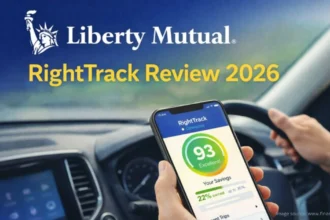Personal loans allow borrowers to obtain lump sum financing for any purpose, with fixed monthly payments and terms from 1-7 years usually. Interest rates charged on personal loans can vary quite a bit depending on the lender, loan amount, and borrower’s creditworthiness. Understanding current average rates helps you know what to expect when applying for a personal loan.
Overview of Personal Loan Interest Rates
Interest is the cost of borrowing money on a personal loan. It is stated as an annual percentage rate (APR) that you pay on the loan amount based on factors like your credit score, income, debt levels, and the loan term length.
Personal loan rates currently average about 9% to 12% APR according to most industry research. But many factors impact the specific rate you will qualify for. Rates can range from as low as 2% up to 36% APR. Taking time to improve your credit and financial profile before applying can mean paying thousands less in interest costs.
While they carry higher rates than secured debt like home equity loans or auto loans, personal loan rates are almost always considerably lower than credit card interest rates. This makes personal loans useful for consolidating and paying off credit card balances faster.
Read on for a detailed breakdown of average personal loan interest rates across a variety of common loan types, terms, lenders, and borrower credit score tiers.
Average Rates by Lender Type
Interest rates on personal loans will vary depending on whether you obtain financing from an online lender, traditional bank, credit union, or alternative lender.
Online Lenders
Online-only lenders like LendingClub, Prosper, Upstart, SoFi, and Best Egg currently offer some of the most competitive average interest rates on personal loans, especially for borrowers with good credit.
Typical APR ranges with online lenders:
- 4% to 12% for good credit applicants (680+ score)
- 10% to 22% for fair credit applicants (640-679 score)
- 15% to 35% for poor credit applicants (below 640 score)
Online lenders can offer lower starting rates because they have less overhead without physical branches. Easier comparison shopping among many online lenders also creates more competition that brings down rates.
READ ALSO: Projected Interest Rates in 5 Years: Detailed Forecast and Analysis for 2025
Banks
Large traditional banks like Chase, Citi, Bank of America, and Wells Fargo hold the most assets under management and lend in large volumes. But their rates tend to be higher than online lenders.
Average personal loan APRs at banks:
- 9% to 18% for good credit
- 15% to 24% for fair credit
- 20% to 36% for poor credit
Banks do have stricter eligibility standards, so they approve fewer applicants than online lenders accepting more credit risk. But once approved, their loan products and servicing resources can be top-notch.
Credit Unions
Not-for-profit credit unions like Navy Federal, Pentagon Federal, and Alliant Credit Union offer members competitive loan rates. Exact rates vary by each credit union.
Typical credit union personal loan rate ranges:
- 6% to 14% for good credit
- 12% to 20% for fair credit
- 18% to 28% for poor credit
Membership eligibility rules make credit unions less accessible. But if you can join one, one their personal loans offers affordable rates.
Peer-to-Peer Lenders
Peer-to-peer lending platforms like Prosper, Upstart, and LendingClub connect individual investors looking to fund loans with borrowers. Since the lenders are individuals looking for returns rather than institutions, rates can sometimes dip lower through the bidding process.
Average P2P personal loan interest rates:
- 6% to 16% APR for good credit
- 10% to 24% APR for fair credit
- 16% to 35% APR for poor credit
P2P loans allow even fair credit borrowers to potentially get single-digit interest rates on a personal loan if enough investors bid competitively. However, investor funding is not guaranteed.
Average Rates by Credit Score Bracket
The higher your credit score, the lower the interest rate lenders will offer, since you represent less default risk in their eyes. Know where your score falls to set accurate expectations.
Excellent Credit – 720+ score
A credit score above 720 is generally considered excellent credit by lenders. With a top tier score, you can qualify for the lowest average personal loan rates.
Average APR with excellent credit:
- Online lenders: 4% to 9%
- Banks: 7% to 12%
- Credit unions: 6% to 11%
Good Credit – 680-719 score
Good credit is a score between 680 and 719. You can expect slightly higher than average interest rates compared to excellent tier borrowers.
Average personal loan APR with good credit:
- Online lenders: 8% to 13%
- Banks: 10% to 16%
- Credit unions: 9% to 14%
Fair Credit – 640-679 score
Fair credit is typified by credit scores from 640 to 679. With average credit, you will pay above average interest rates on a personal loan.
Average personal loan APR with fair credit:
- Online lenders: 11% to 22%
- Banks: 13% to 20%
- Credit unions: 14% to 22%
Poor Credit – Below 640 score
A poor credit score is 640 or lower. With a low score, you will have limited lender options and pay the highest rates if approved.
Average personal loan APR with poor credit:
- Online lenders: 18% to 35%
- Banks: 22% to 36%
- Credit unions: 20% to 30%
Improving your credit before applying will open up better personal loan offers. A poor score locks you into the highest interest rates.
READ ALSO: The Complete Guide to Personal Loans
Average Rates by Loan Term
Most personal loans allow you to select a repayment term from 12 months up to 84 months or 7 years. Shorter terms come with higher monthly payments, while longer terms have lower payments but higher total interest costs over the life of the loan.
Here are the average personal loan interest rates associated with different popular term lengths:
12 months
- Average APR: 10% to 22%
24 months
- Average APR: 8% to 20%
36 months
- Average APR: 7% to 18%
48 months
- Average APR: 9% to 17%
60 months
- Average APR: 10% to 16%
72 months
- Average APR: 12% to 16%
84 months
- Average APR: 13% to 16%
In general, 36 month personal loans tend to come with the lowest average interest rates compared to both shorter and longer terms. You get a nice midpoint between obtaining low rates and keeping the payment manageable each month.
Average Rates for Common Personal Loan Uses
Certain personal loans like auto loans and student loans have rates driven by their specific purpose. But for general purpose personal loans, some common uses have average rates as follows:
Debt Consolidation Loans
Consolidating debt with a personal loan simplifies repayment, often at a lower rate than credit cards.
- Average APR: 6% to 15%
Medical Loans
Finance elective surgeries, dental work, fertility treatments, and more.
- Average APR: 10% to 18%
Home Improvement Loans
Fund home renovations, repairs, upgrades, or additions.
- Average APR: 8% to 20%
Wedding and Engagement Loans
Cover all wedding-related costs from attire to venues.
- Average APR: 10% to 15%
Auto Repair Loans
Pay for expensive car repairs and maintenance.
- Average APR: 15% to 30%
Vacation Loans
Some lenders approve loans specifically for funding vacations.
- Average APR: 10% to 28%
Business Loans
Finance small business operations, expansion, marketing, equipment.
- Average APR: 7% to 20%
Baby and Adoption Loans
Pay for adoption fees, baby expenses, fertility treatments.
- Average APR: 12% to 20%
Average Interest Rates by Loan Amount
Lenders often tier their interest rates by loan amount brackets. Depending on the lender, your loan amount may impact the APR you are offered.
Here are typical rate ranges grouped by common personal loan amounts:
$1,000-$10,000
Average APR: 10% to 20%
$10,000-$25,000
Average APR: 6% to 18%
$25,000-$50,000
Average APR: 5% to 16%
$50,000-$100,000
Average APR: 4% to 14%
In many cases, larger personal loans actually come with lower average interest rates compared to tiny loans. Lenders view larger loans as less risky with borrowers who likely have better credit and income.
But some lenders also cap maximum loan amounts by credit score. And interest rates on jumbo personal loans above $50,000 can sometimes increase again. Check with individual lenders for their specific tiered rates.
READ ALSO: How to Calculate APR on a Car Loan
Average State-by-State Rates
Depending on which state you live in, average personal loan rates can fluctuate slightly around the national rate. This is based on factors like regional household debt levels, credit score distributions, and economic health.
Lowest Average Rates
The states with the lowest current average personal loan interest rates are:
Minnesota – Average APR of 7.81%
North Dakota – Average APR of 8.20%
Vermont – Average APR of 8.42%
Iowa – Average APR of 8.51%
South Dakota – Average APR of 8.54%
Highest Average Rates
The states with the highest current average personal loan interest rates are:
Nevada – Average APR of 14.86%
Louisiana – Average APR of 13.42%
Arkansas – Average APR of 13.08%
Alabama – Average APR of 12.71%
Mississippi – Average APR of 12.70%
Regional variances in average rates tend to be within a few percentage points. So your personal creditworthiness is a much bigger driver of rates than location alone.
Average Rates for Bad Credit Borrowers
For borrowers with bad credit scores below 580, even the highest average personal loan rates from regular lenders remain out of reach. Instead, bad credit consumers turn to subprime lenders promising guaranteed approvals. But these lenders charge extremely high interest rates.
Average APRs on bad credit personal loans:
- OneMain Financial – 33% to 36%
- NetCredit – 34% to 155%
- Avant – 9% to 35%
- Upgrade – 16% to 35%
- LendingPoint – 23% to 30%
Rates from subprime lenders commonly start above 25% APR at minimum. Taking time to improve your credit first opens up much more affordable loan offers from conventional lenders.
Should You Accept a Personal Loan Offer Above Average Rates?
Each borrower’s situation is different. In some cases, accepting an above-average interest rate still makes sense based on your needs and options.
But in general, accepting rates higher than the average for your credit tier likely means overpaying substantially in interest costs over the loan term. Before accepting a high APR offer, be sure to:
- Shop and compare quotes from multiple top lenders to ensure you cannot find a lower rate first. Rates vary, so check around.
- Ask the lender if they offer rate reductions for autopay, loyalty, or other incentives that can bring down your rate.
- Opt for the shortest term possible while keeping payments affordable. This minimizes interest accrual over time.
- Improve your credit score if possible before accepting rates above 20% APR. Paying down debts and resolving errors can help your case.
- Calculate precisely how much extra interest you will pay over the life of the loan at the offered rate compared to average rates, and determine if the additional costs are justified and within budget. Avoid emotional decisions.
While personal loans with above average rates remain much cheaper than credit card debt, it is still smart to avoid overpaying unnecessarily. Weigh your options carefully if offered rates well above averages for your situation.
To Recap
Understanding the factors that influence average personal loan interest rates allows you to set proper expectations when applying. Excellent credit means qualifying for the lowest rates from 4% to 12% APR, while poor credit restricts you to subprime lenders charging 18% to 36%.
Comparing loan offers from multiple types of lenders is key, as online lenders currently offer the most competitive average rate ranges. Opting for a 36 month term also hits the sweet spot for balancing low rates with affordable monthly payments.
Be sure to check your personal loan rate offers against the average rates for your credit score tier and loan details. While accepting an above average rate may make sense at times, overpaying can cost thousands in interest. Take time to shop around and improve your financial profile first for the most affordable financing.
Frequently Asked Questions About Average Personal Loan Rates
What is currently the average interest rate on a personal loan?
The current average personal loan interest rate is approximately 9% to 12% APR according to most industry research. Rates can range much higher or lower though based on each applicant’s creditworthiness and financial picture.
What credit score is needed for the lowest average rates on a personal loan?
To qualify for the lowest average personal loan rates, you typically need an excellent credit score above 720 according to FICO. With a score lower than 680, average rates start to increase substantially. Improving your credit can save you thousands in interest costs.
Do online lenders really offer lower average interest rates than banks?
Yes, top online lenders like LendingClub, SoFi, Prosper, and Best Egg currently offer average personal loan rates 1% to 4% lower on average compared to large traditional banks, especially for borrowers with good credit. This is due to lower overhead costs and borrower comparison shopping.
Does taking a longer loan term result in higher average interest rates?
Generally yes, shorter personal loan terms of 2 to 3 years have lower average interest rates compared to longer 5 to 7 year loans. Shorter terms mean less interest accrual for lenders over time. But longer terms can be managed more easily with lower monthly payments.
What are the average interest rates for poor credit borrowers on personal loans?
Average personal loan rates for borrowers with poor credit below 640 are typically between 18% and 36% APR according to most industry data. Subprime lenders may approve bad credit applicants, but charge extremely high rates over 25% to 35% APR.
If my rate offer seems high, should I accept it or keep looking for something lower?
You typically want to avoid accepting personal loan offers with interest rates more than a few percentage points higher than current averages for your situation. Be sure to check rates with multiple top lenders first, and try methods to improve your rate like adding a cosigner, taking a shorter term, or increasing your down payment if possible.
What interest rate is considered fair and reasonable for an average personal loan?
Based on current averages, a fair and reasonable starting range to aim for on a 3 to 5 year personal loan would be:
- 10% to 15% APR for good credit
- 15% to 20% APR for average credit
- 20% to 25% APR for poor credit
Rates outside those general ranges start to become less competitive for the average borrower’s profile.
In another related article, A Beginners Guide to Interest Rates





